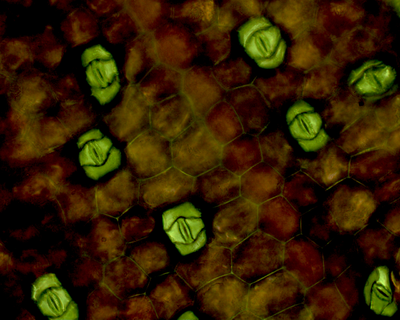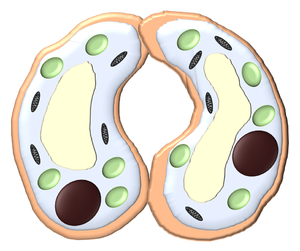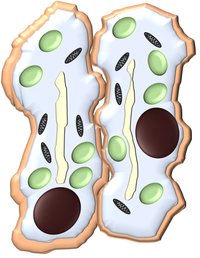Difference between revisions of "Guard Cell"
(→Adaptations of the Guard Cell) |
|||
| Line 10: | Line 10: | ||
|[[File:Stomata.png|center|400px]] | |[[File:Stomata.png|center|400px]] | ||
|- | |- | ||
| − | | style="height:20px; width:400px; text-align:center;" |The under side of a leaf showing [[Guard Cell|guard cells]] and [[Stoma|stomata]]. | + | | style="height:20px; width:400px; text-align:center;" |The under side of a [[leaf]] showing [[Guard Cell|guard cells]] and [[Stoma|stomata]]. |
|} | |} | ||
Revision as of 12:32, 13 September 2018
Key Stage 3
Meaning

The two guard cells can be seen at the leaf.
A guard cell is a specialised cell in a plant leaf which contains can change shape to allow or stop gases from getting into the leaf.
Adaptations of the Guard Cell
- Guard cells can change shape to open and close a hole called a stoma.
| The under side of a leaf showing guard cells and stomata. |
About Guard Cells
- Guard cells are shaped with a gap between them called a stoma.
- There are more guard cells found on the bottom of the leaf.
- Guard cells fill with water to become turgid. This makes the stoma larger. When the leaf gets dehydrated the guard cells become flaccid. This makes the stoma smaller.
| Turgid guard cells are full of water and have a hole called a stoma between them to allow air in and out. | Flaccid guard cells are dehydrated and the stoma is blocked stopping air form getting in or out of the leaf. |


